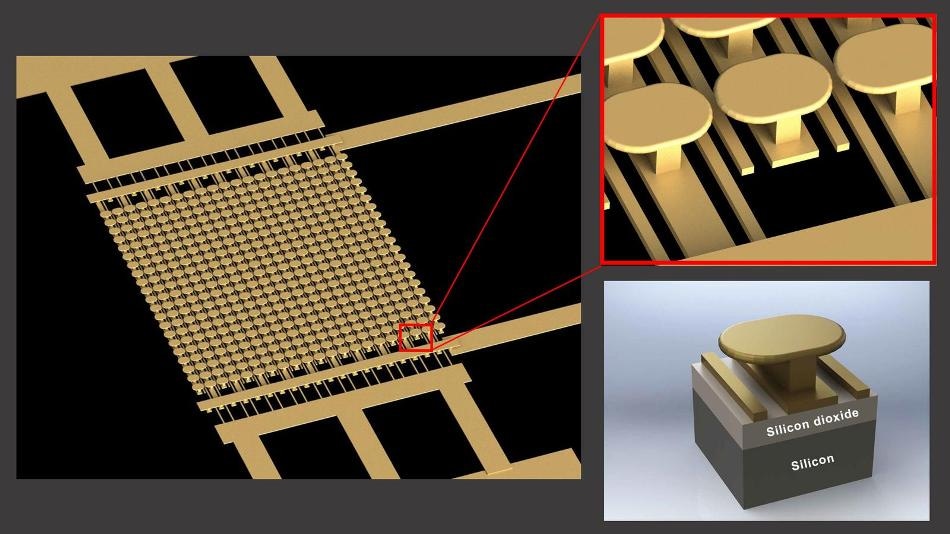Nov 8 2016
 The designed semiconductor-free microelectronic device. (Image courtesy of UC San Diego Applied Electromagnetics Group.)
The designed semiconductor-free microelectronic device. (Image courtesy of UC San Diego Applied Electromagnetics Group.)
A team of researchers at the University of California San Diego have fabricated the first optically-controlled, semiconductor-free microelectronic device. They built a microscale device using metamaterials, which displayed a 1,000 percent rise in the level of conductivity when activated by a low power laser and low voltage.
This finding opens the door for microelectronic devices that are quicker with the capacity to handle additional power, and could also pave the way to more efficient solar panels. The details of the research were published in the November 4 issue of Nature Communications.
The researchers explain that the capabilities of current microelectronic devices, such as transistors, are restricted by the attributes of their constituent materials, such as their semiconductors.
Semiconductor-free microelectronics
For instance, semiconductors can impose restrictions on the electron flow or conductivity of the device. Semiconductors have a band gap, which means they need a boost of external energy to enable electrons to flow via them. Electron velocity is limited as well, as electrons are continually colliding with atoms as they travel through the semiconductor.
The researchers belonging to the Applied Electromagnetics Group were led by electrical engineering professor Dan Sievenpiper at UC San Diego. They aimed to eliminate these hurdles to conductivity by substituting semiconductors with free electrons in space. “And we wanted to do this at the microscale,” said Ebrahim Forati, a former postdoctoral researcher in Sievenpiper’s lab and first author of the research paper.
However, freeing electrons from materials is tough. It either requires applying high voltages of about 100 Volts, very high temperatures of over 1,000°F, or high power lasers, which are not feasible in micro-and nanoscale electronic devices.
To meet this challenge, Sievenpiper’s team fabricated a microscale device that was capable of discharging electrons from a material without such excessive requirements.
The device is made up of an engineered surface, referred to as a metasurface, on top of a silicon wafer, with a silicon dioxide layer in between. The metasurface has an array of gold mushroom-like nanostructures on an array of parallel gold strips.
The gold metasurface is engineered such that when a low DC voltage (below 10 Volts) and a low power infrared laser are both applied, the metasurface produces “hot spots”—spots possessing a high strength electric field—that provide sufficient energy to pull electrons out from the metal and free them into space.
Tests conducted on the device revealed a 1,000 percent change in conductivity. “That means more available electrons for manipulation,” Ebrahim said.
This certainly won’t replace all semiconductor devices, but it may be the best approach for certain specialty applications, such as very high frequencies or high power devices.
Dan Sievenpiper, electrical engineering professor at UC San Diego
According to the researchers, this particular metasurface was engineered as a proof-of-concept. Various types of metasurfaces will have to be designed and optimized for diverse types of microelectronic devices.
Next we need to understand how far these devices can be scaled and the limits of their performance.
Dan Sievenpiper, electrical engineering professor at UC San Diego
Besides electronics, the team is also keen on investigating other applications for this technology, such as photocatalysis, photochemistry, thereby enabling new kinds of environmental applications or photovoltaic devices.